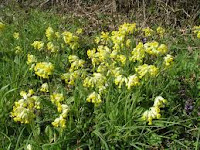Star grass is a member of the Liliaceae family which includes the Tiger lily and the tulip. It should not be confused with the false unicorn root which is Helorias luteum or Chaemaelinum luteum which has different properties to this, Aletris farinosa. This is a native of North America and gets its name Aletris from the name of a slave girl in ancient Greece
Jacob Bigelow writing in 1820 in his American Medical Botany said of Star Grass, “I know of no plant which surpasses the Aletris farinosa in genuine, intense and permanent bitterness.” However he goes on to say that “in a collection of American medicinal vegetables it should not pass unnoticed.”
 It has potential oestrogenic properties and this supports its principle uses in traditional medicine systems both in
It has potential oestrogenic properties and this supports its principle uses in traditional medicine systems both in The Native Americans in the Carolinas used the root in a tisane for diarrhoea and in Appalachia an infusion was used as a tonic, for general weakness, for rheumatism and a sedative.
 It is known by several other names such as Ague root, Aloeroot (referring no doubt to its bitterness), Starwort and a variety of other names. The white bell-shaped flowers bloom between May and August and the stem on which they grow can reach heights of a metre or so. The fresh root if used can have unpleasant side effects such as nausea and vomiting, and is thought to be narcotic in large doses, but these properties appear not to be prevalent when the root is dried.
It is known by several other names such as Ague root, Aloeroot (referring no doubt to its bitterness), Starwort and a variety of other names. The white bell-shaped flowers bloom between May and August and the stem on which they grow can reach heights of a metre or so. The fresh root if used can have unpleasant side effects such as nausea and vomiting, and is thought to be narcotic in large doses, but these properties appear not to be prevalent when the root is dried. The plant is now rare in its native habitat and is protected so you shouldn’t attempt to dig it up. Interestingly, despite its taste, which has been described as soapy and very bitter, it has been cooked and eaten as a vegetable in the past.
The plant is now rare in its native habitat and is protected so you shouldn’t attempt to dig it up. Interestingly, despite its taste, which has been described as soapy and very bitter, it has been cooked and eaten as a vegetable in the past. The root contains diosgenin which has anti-inflammatory, oestrogenic properties which may account for its use for the treatment of rheumatism when it is dried. An infusion of the leaves has been used for colic and upset stomachs as well as for dysentery, but there are other remedies for these, so there is no need to take chances with this bitter plant.















